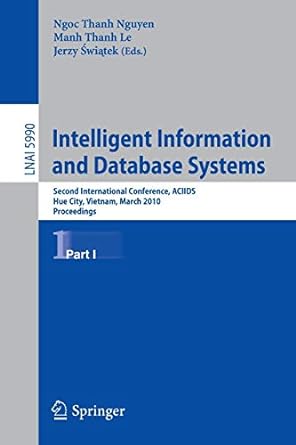Question
Question 39 Given the following processes that arrived in the order shown CPU Burst Time IO Burst Time P1 3 2 P2 4 3 P3
Question 39
Given the following processes that arrived in the order shown
|
| CPU Burst Time | IO Burst Time |
| P1 | 3 | 2 |
| P2 | 4 | 3 |
| P3 | 8 | 4 |
If SJF is used for process scheduling, what is the waiting time for process P1?
Question 39 options:
|
| 10 |
|
| 8 |
|
| 2 |
|
| 4 |
Question 40 (3 points)
Given the following processes that arrived in the order shown
|
| CPU Burst Time | IO Burst Time |
| P1 | 3 | 2 |
| P2 | 4 | 3 |
| P3 | 8 | 4 |
If SJF is used for process scheduling, what is response time for process P2?
Question 40 options:
|
| 14 |
|
| 10 |
|
| 2 |
|
| 4 |
Question 41 (3 points)
Given the following processes that arrived in the order shown
|
| CPU Burst Time | IO Burst Time |
| P1 | 3 | 2 |
| P2 | 4 | 3 |
| P3 | 8 | 4 |
If FCFS is used for process scheduling, what is waiting time for process P3?
Question 41 options:
|
| 14 |
|
| 10 |
|
| 2 |
|
| 4 |
Question 42 (3 points)
Given the following processes that arrived in the order shown
|
| CPU Burst Time | IO Burst Time |
| P1 | 3 | 2 |
| P2 | 4 | 3 |
| P3 | 8 | 4 |
If Round Roubin is used for process scheduling, what is waiting time for process P3?
Question 42 options:
|
| 14 |
|
| 10 |
|
| 2 |
|
| 4 |
Question 43 (4 points)
Consider a non-preemptive shortest job first (SJF) process scheduler. Assume that there are three processes in the scheduling queue and that all three of them are ready to run.
As the scheduling discipline suggests, the shortest job that is ready to run is always given high priority.
Scheduling starts at time t = 0. The CPU and I/O burst patterns of the three processes are shown as follows:
|
| CPU | I/O | CPU | I/O | CPU |
|
| P1 | 4 | 2 | 4 | 2 | 4 | P1 is done |
| P2 | 5 | 2 | 5 |
|
| P2 is done |
| P3 | 2 | 2 | 2 | 2 | 2 | P3 is done |
Each process exits the system once its CPU and I/O bursts, as just shown, are complete.
What is the waiting time for process P1?
Question 43 options:
|
| 4 |
|
| 3 |
|
| 2 |
|
| 1 |
Question 44 (4 points)
Consider FCFS process scheduler. Assume that there are three processes in the scheduling queue and that all three of them are ready to run.
As the scheduling discipline suggests, the first coming job that is ready to run is always given high priority.
Scheduling starts at time t = 0. The CPU and I/O burst patterns of the three processes are shown as follows:
|
| CPU | I/O | CPU | I/O | CPU |
|
| P1 | 4 | 2 | 4 | 2 | 4 | P1 is done |
| P2 | 5 | 2 | 5 |
|
| P2 is done |
| P3 | 2 | 2 | 2 | 2 | 2 | P3 is done |
Each process exits the system once its CPU and I/O bursts, as just shown, are complete.
What is the waiting time for process P2?
Question 44 options:
|
| 4 |
|
| 3 |
|
| 6 |
|
| 12 |
Question 45 (4 points)
Consider Round Robin process scheduler with time slice 2. Assume that there are three processes in the scheduling queue and that all three of them are ready to run.
Scheduling starts at time t = 0. The CPU and I/O burst patterns of the three processes are shown as follows:
|
| CPU | I/O | CPU | I/O | CPU |
|
| P1 | 4 | 2 | 4 | 2 | 4 | P1 is done |
| P2 | 5 | 2 | 5 |
|
| P2 is done |
| P3 | 2 | 2 | 2 | 2 | 2 | P3 is done |
Each process exits the system once its CPU and I/O bursts, as just shown, are complete.
What is the waiting time for process P3?
Question 45 options:
|
| 10 |
|
| 8 |
|
| 7 |
|
| 12 |
Step by Step Solution
There are 3 Steps involved in it
Step: 1

Get Instant Access to Expert-Tailored Solutions
See step-by-step solutions with expert insights and AI powered tools for academic success
Step: 2

Step: 3

Ace Your Homework with AI
Get the answers you need in no time with our AI-driven, step-by-step assistance
Get Started


